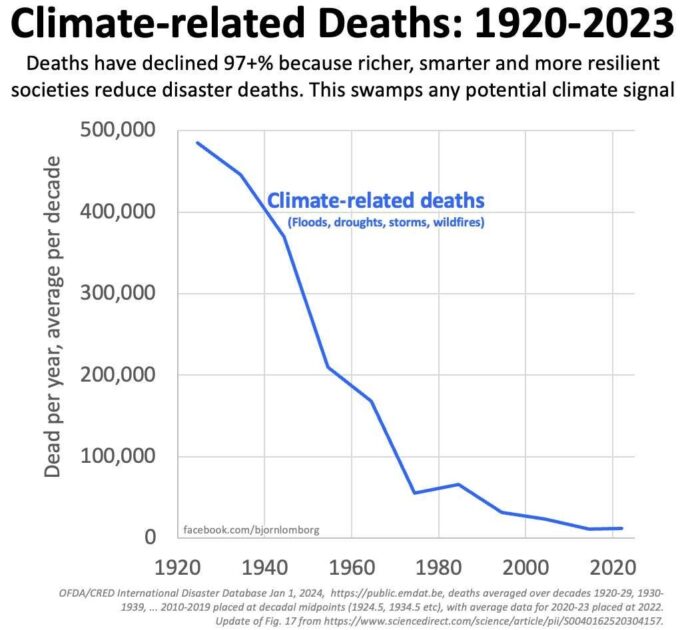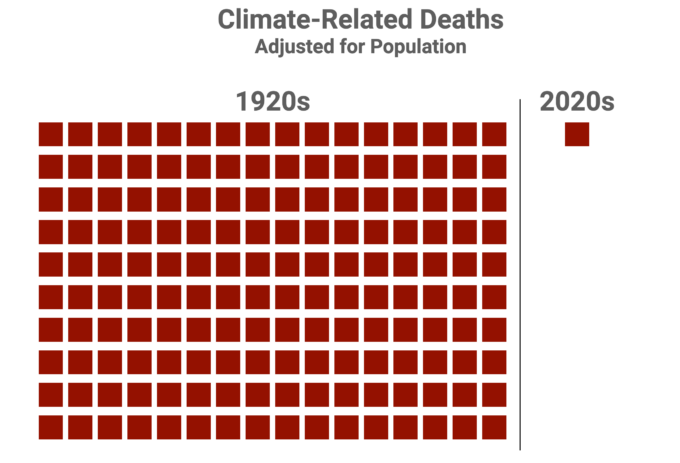Our friend Bjorn Lomborg has updated his chart on climate-related deaths. Since the 1920s, the number of deaths has fallen by more than 97 percent.

As the global population quadrupled over the century, the risk per million declined from 241 in the 1920s to 1.5 in the 2020s. This is a 99.38 percent decrease. Adjusted for population size differences, for every person who dies from climate today, there were over 160 who died in the 1920s.

If the rate had remained the same over the past 100 years, there would have been an average of 1,928,000 climate-related deaths from 2020–2023 instead of 12,270. Our ability to innovate around climate risks has been astonishing as long as government policy does not counterproductively interfere.
The reciprocal of death is life. If something falls by 99.38 percent, it means the opposite has increased by over 16,029 percent. ([1÷ (1-.9938) – 1]). Thus we can say that life safety from climate-related deaths over that past century has increased by 16,029 percent.
This dramatic increase in life safety increased at the same time global population increased by 300 percent. Every 1 percent increase in population corresponded to a 53 percent increase in climate-risk safety. When human beings are free to adapt and innovate, they dramatically reduce risks and make life much safer.
This article was published at Gale Winds on 6/11/2024.

